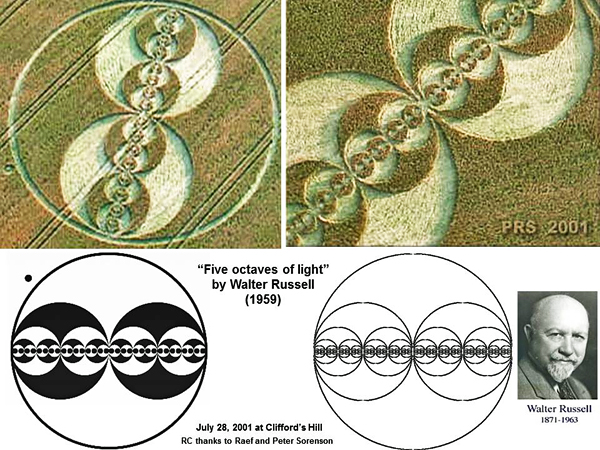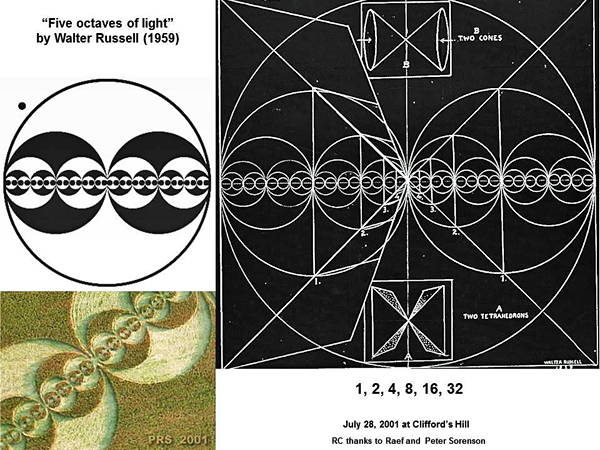|
A crop picture at Clifford’s Hill on July 28, 2001 showed a famous diagram from philosopher Walter Russell, concerning “five octaves of light” Walter Russell was a great visionary of the early 20th century, who worked successfully in business, art, architecture and science (see walter-russell.com www.walter-russell.de www.philosophy.org). He studied “waves of light” just as a musician might study “waves of sound”. During the 1950’s, Russell made a famous diagram which shows how light can oscillate between different frequencies as it expands outward from a central source. Thus it may show relatives frequencies of 1, 2, 4, 8, 16 or 32, etc. A similar process is seen when doing “frequency doubling” with a laser (see https://en.wikipedia.org/wiki/Second-harmonic_generation). For some reason, part of his famous diagram was drawn in crops near Clifford’s Hill on July 28, 2001:
Several other crop pictures at the same time showed images of “electric and magnetic fields”, or of “magnetic motors and flywheels”. The physical theory behind Russell’s diagram becomes clear, once we study this second slide which shows his complete diagram:
As light moves outward in “two cones” away from a central source, its waveform may oscillate from relative wavelength 1 to shorter wavelengths such as ½, ¼, 1/8, 1/16 or 1/32. He regarded those waves as analogous to “octaves” of sound which may be heard from a piano. Each octave, say for “high C” versus “low C”, differs from its neighbour in wavelength or frequency by a factor of two. Whether his diagrams were just “artistic”, or actually provide some insight into the meaning of “physics”, remains to be seen. Red Collie (Dr. Horace R. Drew) |



